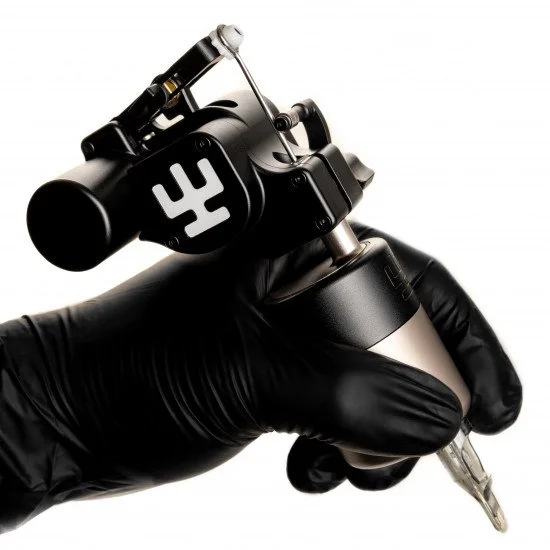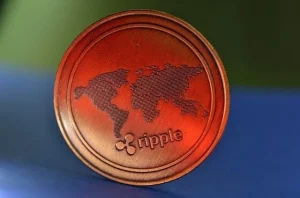When a single machine has to cover clean lining, soft gray wash, and dense color packing, consistency matters more than raw force: predictable hit, steady behavior at low frequency, and less hand fatigue over long sessions are what actually show up on skin. Avenger 3 Pro approaches these problems as engineering constraints rather than style presets, aiming to keep torque and feel consistent while switching tasks in seconds. For a broader look at the brand’s engineering mindset and product ecosystem, see Vlad Blad.
What changes on skin
Clean lines depend on a stable hit and a tip that tracks exactly where the hand intends to go; wobble often comes from chasing voltage rather than keeping the frequency and stroke consistent. With Avenger 3 Pro, low‑frequency control reduces bounce and helps pigment settle evenly, so gray wash stays smooth and saturated without overworking. For dense color packing with large mags, a consistent feel across speeds shortens the “dial‑in” time and lowers trauma on sensitive areas, which is what actually improves healing and keeps edges looking calm rather than swollen.
How it’s achieved
A brushless M3Pro motor with a heavyweight flywheel runs on a constant 12‑volt feed, while speed is adjusted by switching motor windings, so torque stays present even at low frequencies where many pens feel hollow. Real‑time stabilization evens out needle oscillation, and magnetic assistance counters cartridge membrane resistance, which keeps the hit crisp without forcing extra passes. That mechanical predictability is why switching tasks feels immediate rather than like re‑learning the machine for every setup; full specs, MultiStroke ranges, and FAQ are available on vlad blad avenger 3.
MultiStroke in practice
Switching stroke length changes how the needle meets the skin, so the task drives the setting rather than habit. At 3.2–3.5 mm, higher frequencies favor gray wash and soft shading with minimal irritation, giving smooth gradients without chewing up sensitive areas. Around 3.8–4.2 mm, the machine feels neutral and direct for versatile color packing and fine‑to‑medium lines, keeping the hit consistent so passes stack cleanly. At 4.7 mm, bold lining and aggressive whip shading benefit from a crisper impact that moves pigment quickly while staying controlled on turns. The 5.5 mm option delivers maximum punch for experienced hands and thicker skin, helping large magnums settle ink fast with fewer passes when precision and economy of motion matter.
Use‑case notes by task
Lining
For tight single‑pass lines with small groupings like 3RL, a shorter stroke at higher frequency keeps the tip planted and minimizes lateral wobble, so the hand can track confidently through curves without chewing edges.
On thicker outlines, stepping up stroke length sharpens impact and helps pigment seat on the first pass, reducing the need to revisit weak segments and keeping bevel control predictable.
Black & gray shading
Softer, shorter strokes at higher frequencies lay smooth gradients with less irritation, which preserves texture in healed skin and avoids the muddy look that comes from overworking.
When transitioning from light wash to mid‑tone, small frequency nudges matter more than voltage swings, keeping the hit feel consistent as needles open up the skin.
Color packing with large mags
Mid‑to‑long strokes with moderate frequency move dense pigment efficiently while maintaining clean, overlapped passes, so saturation builds evenly without hot spots.
A stable hit reduces bounce on wide needles, which shortens dial‑in time and helps maintain edge fidelity along color boundaries.
Sensitive areas vs thick skin
On thin or reactive skin, shorter stroke and higher frequency calm the entrance and minimize trauma, allowing multiple soft passes without swelling.
On thicker areas, a longer stroke with steady low‑to‑mid frequency delivers the punch needed to seat pigment fast while keeping the machine controllable on long arcs.
Ergonomics and session flow
A balanced body that sits at 134 g without the cell and about 167 g with it keeps the center of mass close to the grip, which steadies the hand on long, confident passes rather than forcing grip pressure to compensate. The “anti‑gravity” assistance reduces the sense of membrane drag in cartridges, so the tip tracks more like a wired setup without the cable tug, helping lines stay honest when working across large arcs. Compatibility from small liners to large magnums means one pen can cover a full day’s queue, and the feel remains consistent as setups change, so attention stays on needle angle and depth instead of fighting the tool.
Battery and charging
Swappable 18500 cells keep the pen compact while delivering long runway for full‑day work, and a quick top‑up strategy prevents downtime during back‑to‑back sessions. Typical settings around a mid stroke and moderate frequency can yield up to several hours on a single cell, while a 15‑minute charge adds roughly an hour and a half of usable time, so breaks between clients become functional refuels rather than interruptions. Charging in‑pen over USB‑C or using an external cradle gives flexibility in the shop, and carrying a spare unprotected 18500 lets sessions continue seamlessly if a long color‑packing block runs over schedule.
Reliability and safeguards
Internal electronics are designed to fail‑safe rather than fail‑loud: if resistance spikes or movement is obstructed, the drive shuts down to protect components and prevent chewing the same spot. A dual‑board layout and guarded motor control keep speed changes smooth, so switching tasks doesn’t introduce surprise spikes in hit or heat. Day‑to‑day, the pen asks little beyond routine hygiene, occasional contact cleaning on the battery terminals, and avoiding makeshift lubrication; if something sounds off, treating it as a service cue preserves both consistency and lifespan.
Who benefits most
Artists who split days between tight lining, soft black‑and‑gray, and large‑needle color work gain the most from consistent feel across frequencies, because less time is spent re‑tuning and more on keeping angle and depth honest through long passes. Studios that rotate assistants or share setups also benefit, since predictable behavior at low and mid frequencies reduces the learning curve and keeps healed results closer to what was intended on day one. Those new to long strokes should approach the 5.5 mm option with respect; it rewards experienced hands and thicker skin but can overdo trauma if pushed where a shorter, faster stroke would be calmer.
Ethos and sustainability
Durability and responsibility go hand in hand when a pen is built to stay in service for years rather than cycles of seasonal upgrades. A lightweight body machined from aerospace‑grade aluminum keeps waste down, while a replaceable battery extends lifecycle without replacing the entire unit. Packaging is intentionally minimal, and day‑to‑day upkeep focuses on simple care rather than consumable‑heavy routines, so the investment stays centered on performance at the skin—where it matters—rather than on accessories that end up in a drawer.
Closing takeaways
Predictable feel across frequencies matters more than peak power when the goal is cleaner lines, calmer shading, and even saturation; less time spent “chasing settings” means more time focused on angle, depth, and pace.
Hardware choices—brushless drive with stable torque, real‑time stabilization, magnetic assistance, and quick stroke switching—translate directly into fewer passes and quieter skin on sensitive areas.
Practical details like balanced weight, broad needle compatibility, swappable 18500 cells, and fail‑safe protections make the tool easier to trust across a full day’s queue without changing the way sessions flow.



